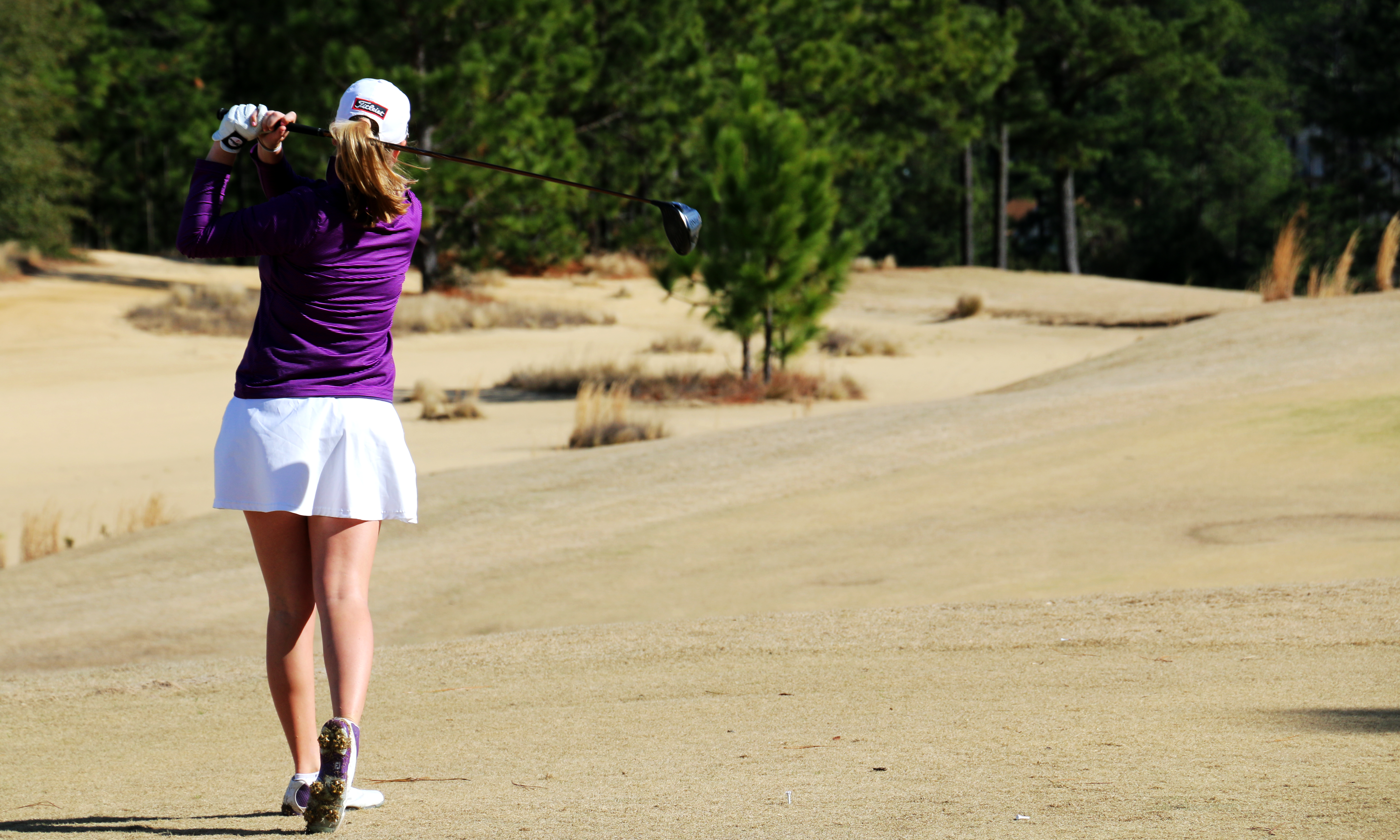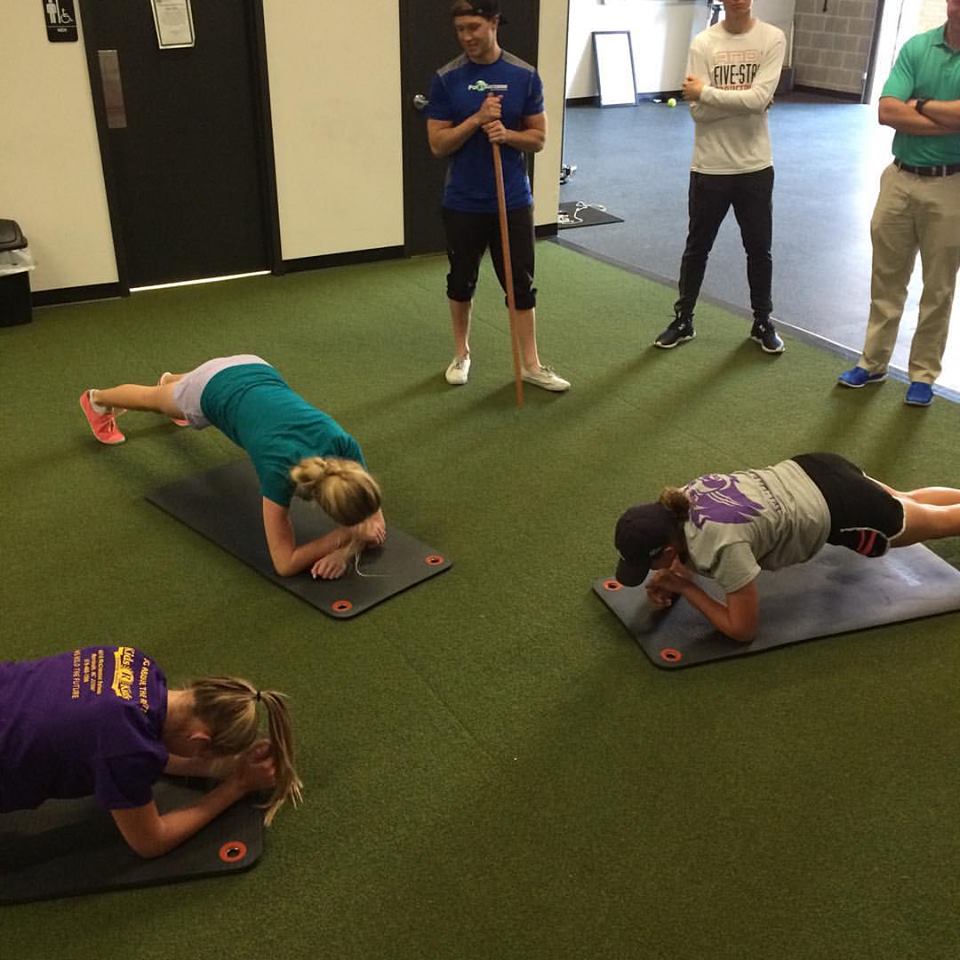You are probably reading this article because the title made zero sense to you when you read it. You are probably thinking, “Slow training makes me go fast? Everyone knows you have to train fast if you want to go fast. We have all seen SuperSpeed Golf’s commercials. This guy is an idiot.”
With that rationale, not sure I can blame you!
If you’re a golfer and you want to move the clubhead faster, with more efficiency and for many more years to come, however, I encourage you to read on with a bit of curiosity and even skepticism if that is more your flavor. What you find out might turn the way you train 180 degrees onto its head. I know it did for me.
When I started training athletes more than 10 years ago, I subscribed to the “train fast to be fast” mentality for a while. Then, thankfully, I read the research out there and realized how I was overlooking one of the most important phases to train mobility, power and maximal strength in my athletes as many people do: the eccentric phase.
There are a few phases of movement that we should clarify before going any further so as to clear up any confusion later on. Most movements consist of three phases:
- The Eccentric Phase
- The Isometric Phase
- The Concentric Phase
In a squat, the eccentric phase is the lowering phase to the bottom of the squat. The isometric phase is the pause at the bottom of the squat. The concentric phase is when the athlete starts to move their body back toward the start position.
In the golf swing, we can simply classify the three phases:
- The eccentric phase occurs toward the end of the backswing as the club is decelerated
- The isometric phase occurs at the top of the backswing as there is a slight pause right before the start of the transition toward the target (i.e. there is still tension in the tissues and joint, but there is no net joint motion occurring)
- The concentric phase occurs during the downswing when the club is accelerating toward the golf ball
Please note that there are many nuances and arguments could be made against these classifications. This categorization is made in the spirit of simplicity to help with understanding of the phases.
While all three of these movements are relatively easy to see in most human movement and in golf as well, we more often see a focus on the concentric training piece in the gym rather than all three phases. This is interesting to note, as the eccentric phase is a crucial one where athletes are able to store large amounts of energy in connective tissues (muscles and tendons mostly) that we can then use to produce more power during the concentric phase.
The caveat here is that you need to be strong enough to apply your brakes effectively to decelerate during the eccentric phase and reapply this force during the concentric phase. If you are weak in the eccentric phase, not only will you be inefficient in transferring the energy from the eccentric to concentric phase, but you will be more likely to be injured as well.
So why are we not focusing on this critically important phase of movement in our training of golfers? This is the million-dollar question. By simply adding a focus on this part of your training, you will not only decrease your risk of injury, but also improve your strength, power, mobility, movement efficiency, and muscle growth.
Now to the “so what” part of this article. All of this information is great, but how do you implement this type of training? More importantly, when in the year should we be doing this? Who is this NOT for? Let’s get into it!
What is going to follow is a simple progression from beginner to advanced that you can use to implement the benefits of eccentric training to help improve your longevity in the sport and your power output on the tee.
Please Note: If you’re a newbie, we recommend you seek out the help of a fitness professional to safely guide your progressions.
Step 1: Three-Second Eccentrics
This is probably the simplest form of eccentric training you can do, and it doesn’t matter if you are using a kettlebell, dumbbell or barbell. It is exactly what it says. Just focus on lowering yourself through the eccentric phase for a three-second count.
The weight that you use should be less than what you would normally do for the rep count, as the focus on the eccentric phase increases your time under tension and the demand on the system with lower weights. This is another reason why eccentric training with newer athletes is great. You don’t have to use as much weight, and you are forced to slowly move through the motion and truly own the pattern. There is no using speed to mask weakness or bad technique. Usually sets of 6-8 are plenty with this focus.
Step 2: 5-7 Second Eccentrics
This is a simple progression off the three-second eccentrics in Step 1. After four weeks or so of the three-second program, you can move to the even slower and longer lowering. This further challenges you to really own the patterns and control the motion perfectly. It allows you to be more in tune with how you are moving throughout the motion and many times will bring to light inefficiencies in your pattern that you can work to improve without the weight being crazy heavy.
Step 3: Three-Second Isometrics
This next step takes “feel the burn” to a whole new level. Now that you can control the eccentric phase, you will work to isometrically control and hold your position at the bottom of the motion. This is a nice variation away from the slow-lowering focus to really challenge you to control the weight during the transition phase of the motion.
A common question is, “How low do I need to go?” Without getting into the whole butt-to-ground vs thigh-parallel-to-the-ground argument, go as low as you can (comfortably) while still maintaining sound technique. That being said, try to at least get to thigh-parallel if you’re able to with good technique.
Step 4: Overload Plyometrics
Depending on your age, your joint health and the overall ability you possess, Step 4 might be another game changer for you. Before going any further, if you have total joint replacements, bad arthritis, avoid high impact activities for any reason or just generally don’t think jumping is a good idea for your overall health, then the risk/reward is not present for you with this step. Stick to Steps 1-3 and enjoy the benefits there.
If you have no problems jumping or with higher impact force training, however, Step 4 can be not only fun, but also very beneficial to your performance! The idea of overload plyometrics is that as you drop down from a surface to the ground, you absorb that force and then explode as high as you can vertically or as far as you can horizontally — and then stick a solid landing.
In golf, the vertical force is what we are going to want to focus on training as the horizontal is less applicable. There are many variations you can perform such as altering your take-off mechanics, your landing mechanics (one vs. two feet) and even the height of the surface from which you are dropping. We utilize these variations with many of our traveling professional athletes as equipment can often times be difficult to find, but it is always easy to find a bench or step to drop from in order to make sure they are stimulating the nervous system response that we are after.
The name of the game with overload plyometrics is all about how much force you have to absorb. The more force you have to absorb, the harder and more advanced the exercise is. To clarify, if you jump 20 inches in the air and land on the ground, that would be more intense (you would have to absorb more force) than if you jump 20 inches in the air and land on a 12-inch box.
Step 5: Overloading
This is where a lot of the rubber hits the road, and it should not be attempted without professional guidance — and definitely not if you are not a highly trained athlete. This is not for the weekend warrior who hits the gym only 1-2x/week. If that is you, stick to the top 3 steps and you will still see gains.
Highly trained athletes can often handle up to 125 percent or more of their concentric ability eccentrically. This means that we can put higher levels of stress on their tissue to force it to adapt, leading to increased maximal strength and hypertrophy gains. This is the performance benefit for higher-level athletes with great movement competency. There are a number of ways to achieve this desired outcome of overload training, such as with drop bars on the side of the barbells, heavy chains, flywheel training or others.
Flywheel training is one that I would like to focus on here, as it is one of the safest forms of training around because it only allows you to put as much force on yourself eccentrically as you can create concentrically. This means the chances of injury are much lower than the other types of overload mentioned above. While these machines tend to be a bit cost prohibitive, it is this type of advance in training that will continue to occur to help golfers hit it longer for many more years to come while staying healthy. If you can find a facility near you that has one… JOIN!
—
In the end, eccentric-based training and eccentric-overload training create improvements in power, speed, strength, change of direction ability and mobility while also reducing the risk for injury. Each variation of this type of training may be more appropriate for different golfers at different stages in their life and career, but the first step is to be aware that this type of training exists. The next step is to figure out where it might fit into your training regimen. As always, I am more than happy to field questions and answer any specifics you may have by just emailing info@par4success.com.
As with anything, the success of this training depending on how it is executed. Because of the increased demand on the nervous system and muscles, there can be increased soreness after this type of training so recovery needs to be perhaps the biggest part of this conversation. Timing in terms of when in the season to utilize eccentric based training as well as how to support recovery with nutrition are conversations that you should have with your golf fitness professional.








Leave A Comment